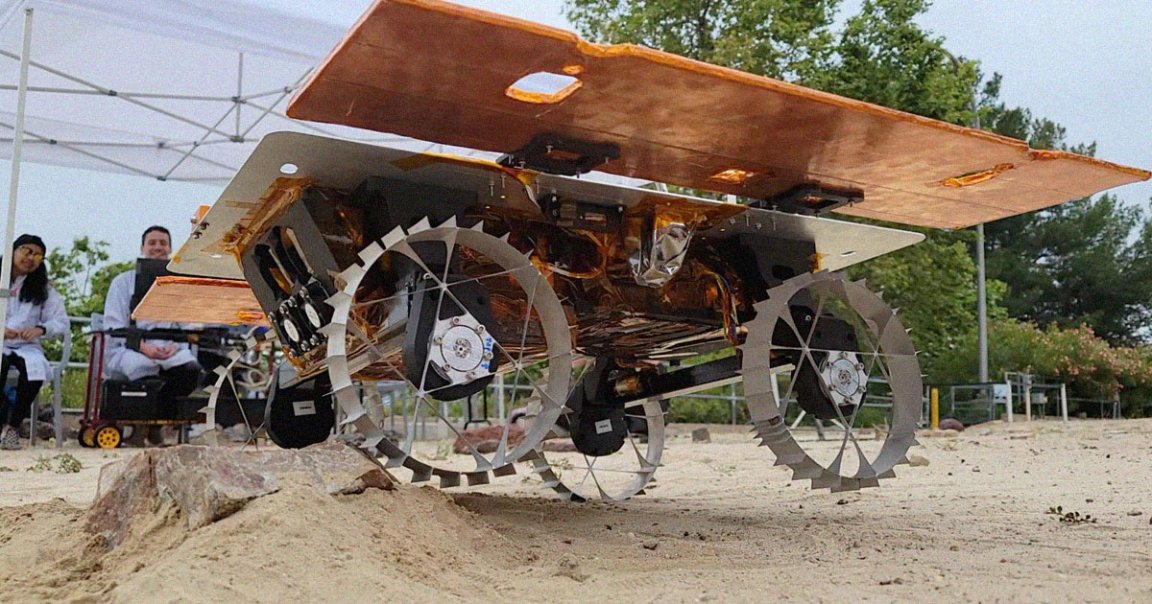
Gnarly
Scientists at NASA’s Jet Propulsion Lab have built lightweight Moon rovers that are about the size of a carry-on. And in one video of them demonstrating their prowess here on Earth, that lightness helps one of them pull off a pretty sweet off-road stunt.
According to a press release, these dexterous little dudes were built as part of the Cooperative Autonomous Distributed Robotic Exploration (CADRE) set, an effort to eventually take a trio of them up to the Moon next year.
Along with describing these cute little bots’ specs — they’ll even autonomously elect the “leader” of their pack — JPL included a GIF of one of the prototypes hitting a bump on a test track.
By the looks of it, that bump causes the lightweight robot to get some gnarly air — at least temporarily. And we can only guess what such a stunt will look like at a sixth of the Earth’s gravity.
Democracy Now
The autonomous nature of these diminutive bots will be such that mission controllers back on Earth only need to give them a vague command for them to go about their jobs, rather than needing to remote-control their every movement.
“The only instruction is, for example, ‘Go explore this region,’ and the rovers figure out everything else: when they’ll do the driving, what path they’ll take, how they’ll maneuver around local hazards,” said Jean-Pierre de la Croix, CADRE’s principal investigator at the JPL, in the statement. “You only tell them the high-level goal, and they have to determine how to accomplish it.”
That level of autonomy, however cool, does take a lot of computer power which, in turn, makes these funny little guys burn hot. Luckily, the humans behind CADRE have a plan for that, too.
“To prevent the rovers from cooking, the CADRE team came up with a creative solution: 30-minute wake-sleep cycles,” the press release explains. “Every half-hour, the rovers will shut down, cooling off via radiators and recharging their batteries.”
It gets even cooler, if you will: once they all awake simultaneously, the rovers will “share their health status with one another” via Wi-Fi-like mesh radio networking. After that, they’ll again elect which of them will be the leader “based on which is fittest for the task at hand” and then trawl off “for another round of lunar exploration.”
It’s clear that the CADRE robots are not your momma’s lunar rovers — and their autonomy will be a lesson in robotic cooperation and off-planet off-roading, too.
More on the Moon: NASA Head Concerned That China Will Steal Lunar Resources